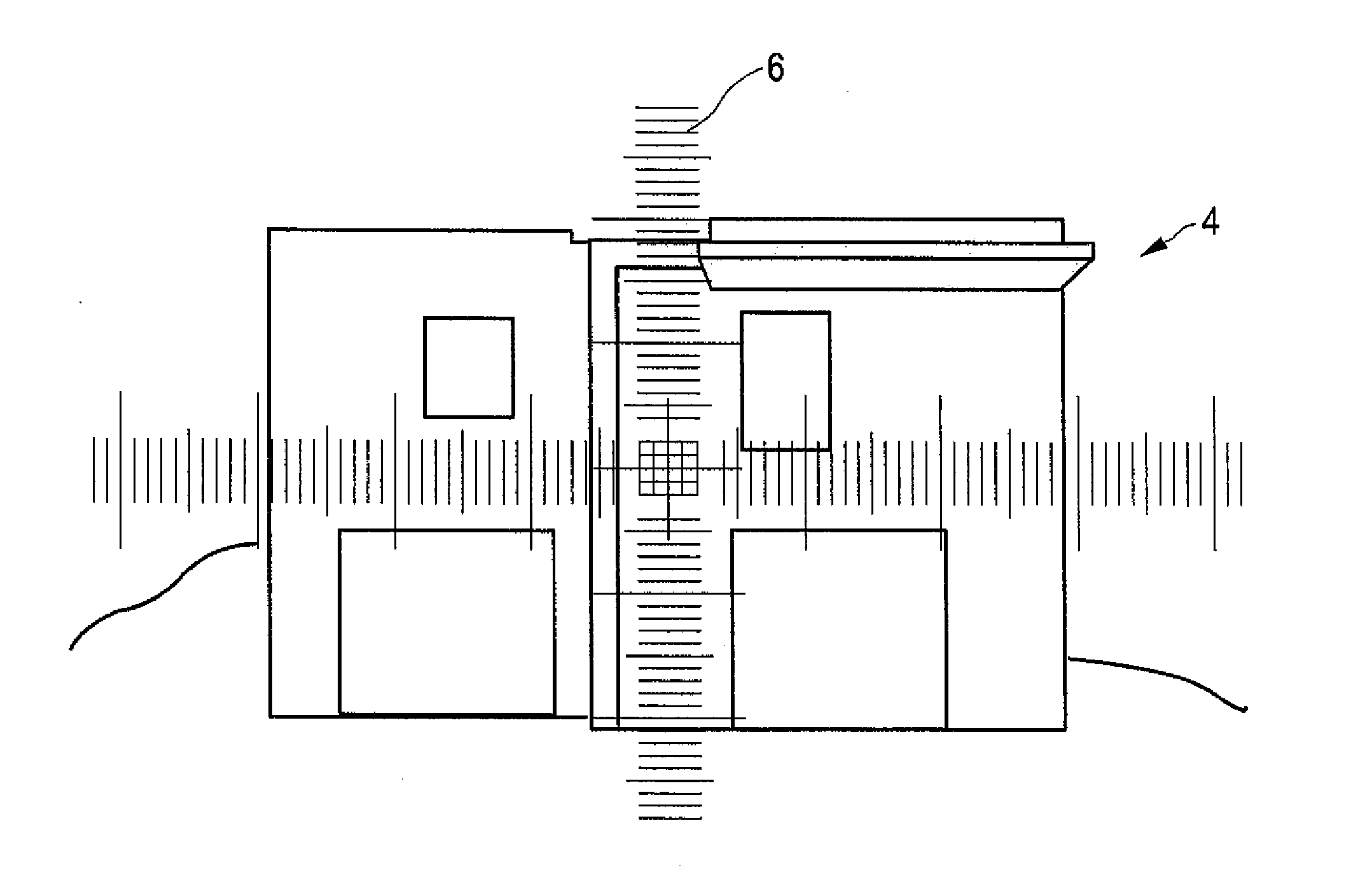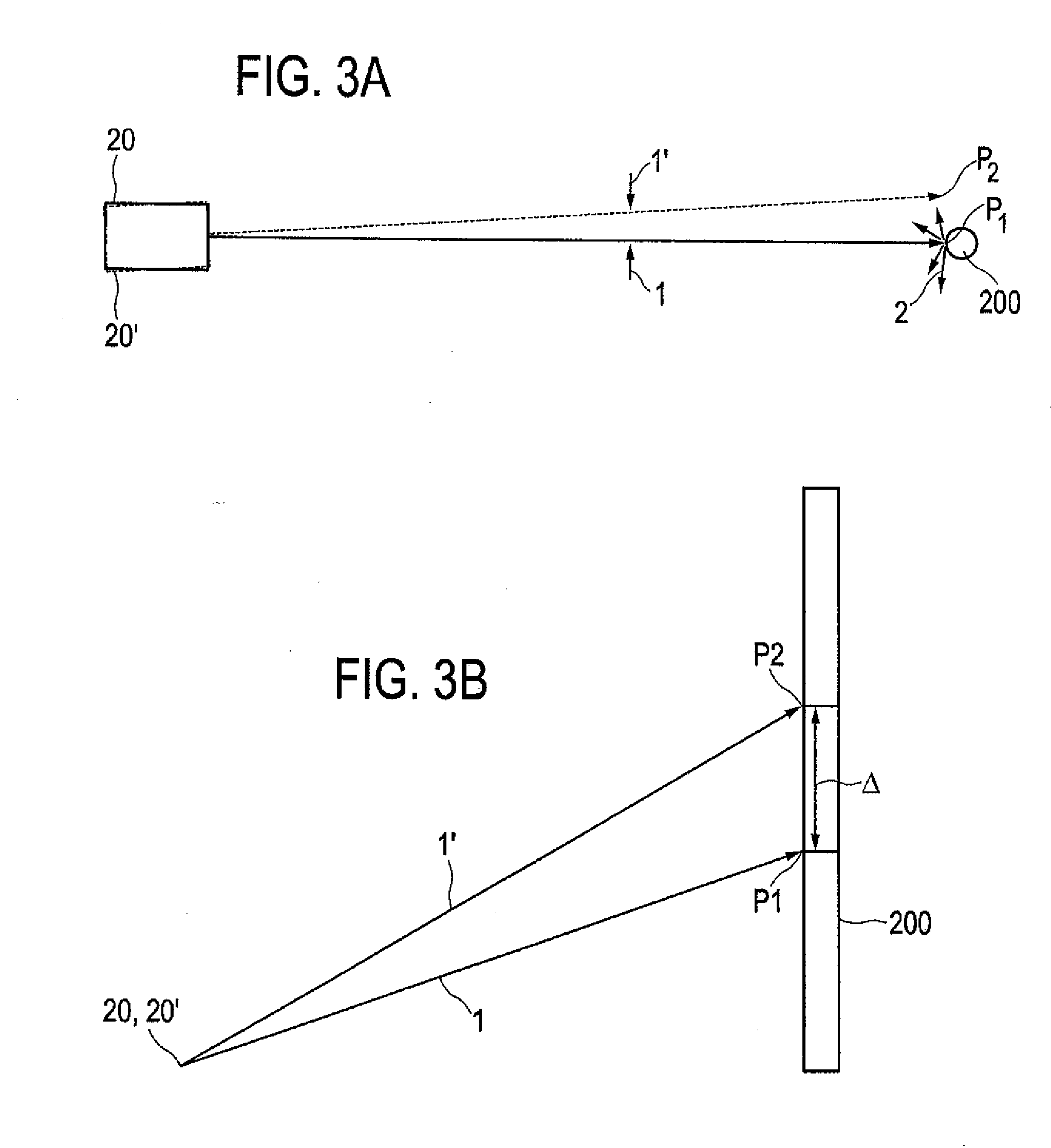Measuring device for noncontact measurement of distances to a target object
a non-contact, measuring device technology, applied in the direction of distance measurement, instruments, surveying and navigation, etc., can solve the problems of inability to manage, system complexity is too large for applications on construction sites or in construction and renovation jobs, and software-based approaches have proved inadequate in compact measuring devices, in particular handheld ones, to achieve the effect of simplifying processing operations, easy visualization, and convenient handling
- Summary
- Abstract
- Description
- Claims
- Application Information
AI Technical Summary
Benefits of technology
Problems solved by technology
Method used
Image
Examples
Embodiment Construction
[0049]FIGS. 1A and 1B show a measuring device 100 in the form of a handheld device for a noncontact measurement of a distance z, which is defined more precisely in FIG. 5, to a target object 200 shown as an example in FIGS. 3A and 3B. Measuring device 100 is shown in a top view of an operator side of housing 10 in FIG. 1A and in a side view of housing 10 in FIG. 1B—the components of measuring device 100 are represented schematically.
[0050]Housing 10 of measuring device 100 which is designed in the form of a laser distance measuring device for example, is designed for manual use—so in the present case, it is not insignificantly larger than the area of a hand with corresponding haptics, possibly also ergonomics. Likewise, housing 10 is shown as a rectangle for the sake of simplicity. Housing 10 accommodates distance measuring unit 20 in the form of a laser distance measuring unit utilizing optical measuring beam 1. Possible variants of distance measuring unit 20 are shown in FIGS. 2A ...
PUM
 Login to View More
Login to View More Abstract
Description
Claims
Application Information
 Login to View More
Login to View More - R&D
- Intellectual Property
- Life Sciences
- Materials
- Tech Scout
- Unparalleled Data Quality
- Higher Quality Content
- 60% Fewer Hallucinations
Browse by: Latest US Patents, China's latest patents, Technical Efficacy Thesaurus, Application Domain, Technology Topic, Popular Technical Reports.
© 2025 PatSnap. All rights reserved.Legal|Privacy policy|Modern Slavery Act Transparency Statement|Sitemap|About US| Contact US: help@patsnap.com



